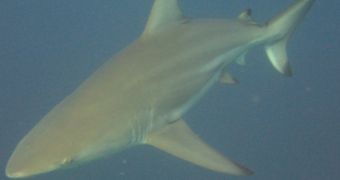The second documented case of a female shark bearing a live young without ever being exposed to the presence of a male has recently been recorded. But this doesn't mean that there haven't been such cases before, even though they were not observed and analyzed by specialists.
But before all feminist supporters possibly reading this article start crying out loud that “See, we can fare very well even without men's only needful feature,” it should be stressed out that this is perceived by biologists rather as a natural aberration than a normal response to being deprived of the presence of the opposite gender. Furthermore, although this has been known to happen for many species (like certain fish, amphibians, birds, reptiles and, now, sharks), humans have only one such case recorded in all history and we all know what that is.
The phenomenon in question is called parthenogenesis and is an accident. As Demian Chapman, a shark scientist from the Institute for Ocean Conservation Science, Stony Brook University, who led the research related to the latest case explains, “It may just be an occasional mistake that sometimes occurs when eggs are left unfertilized.” According to him, during the conceiving process of the female's egg, there are actually 4 cells produced, of which only one becomes an egg per se, while another one, called “the sister polar body” closely resembles it in genetic structure. As Chapman states, during the parthenogenesis, “the sister polar body fuses with the egg and injects its chromosomes into it. Therefore, it acts like [semen] and triggers the development of an embryo.”
Sadly, the 8-year old blacktip shark from (alas!) the Virginia Aquarium, called Tidbit, died before it could give birth, and the baby was discovered during the autopsy. The DNA testing (similar to the human paternity tests) indicated that there were no male chromosomes and no father genetic material involved.
Another case like this was found last May in a hammerhead shark from the Nebraska zoo. Prior to that, several other females were unofficially reported to have succeeded in the exact same feat, including a white spotted bamboo shark, which suggests that this ability is common to various species of sharks, if not all. But this is not a good thing, as Chapman stated that the resulting baby shark shows a “reduced genetic diversity when compared to its mother or any other shark produced by sex,” while adding that the phenomenon shouldn't be regarded as a “great white hope for depleted shark populations.”

 14 DAY TRIAL //
14 DAY TRIAL //